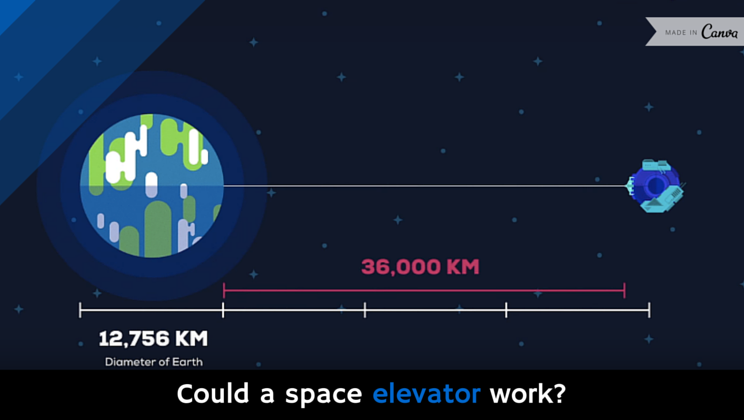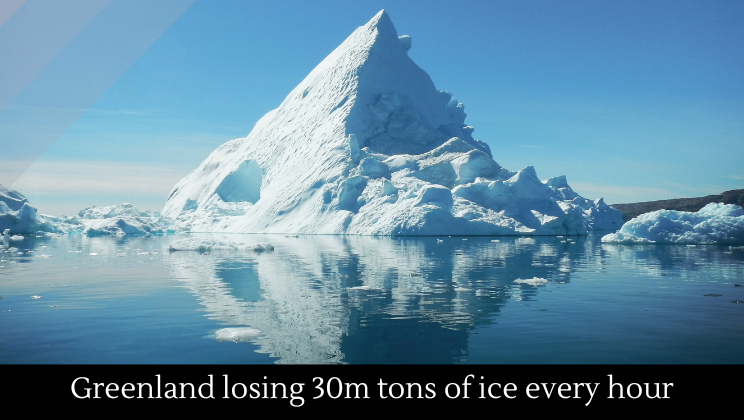Could a space elevator work? [video]
Posted by Josh Taylor / April 9, 2016
Space shuttle launches are expensive and inefficient, but for now they’re the only way we have of getting into space. For now. But it’s possible that we’ll soon have an elevator. Here’s how.
Full story at In a Nutshell.












Not with current materials and technology. In ‘THEORY’ a form of ‘warp drive’ is possible….but
not with todays materials and technology. The real question is how long before we can develop the appropriate materials and technology for this….or do we commit species suicide before we can get off planet in any meaningful fashion. We are a clever species but not a particularly intelligent one.
We need to reduce earth population to 1 Billion at the most. Anything else is useless to talk about.
En contrar mon capitan, There have been serious proposals for space elevators using today’s technologies.,especially using carbon nano tubes. (also see Edwards, Bradley Carl. The NIAC Space Elevator Program. NASA Institute for Advanced Concepts)
According to the UN we need to reduce the population by a min. of 5 billion. My question is who gets to pick who stays and who has to go?
watching this video felt like I was watching an entry in the HHGTTG book – I kept expecting to hear about Vogon poetry..
A little detail always overlooked in a space elevator concept is the change in lateral velocity of a payload climbing the tether… that takes energy. It even says in the video that “fast sideways motion comes free with the Earth’s rotation”… but there’s this little thing called conservation of momentum they are ignoring. When a payload begins on the Earth’s surface it’s going about 1000 mph, and by the time it reaches orbital speed it has to be going almost 7000 mph.
Since the tether could not be rigid an equivalent amount of energy would have to be exchanged or the tether could not remain vertical. One solution would be to lower a counterweight equal to the rising mass, but that mass would have to either be accelerated and raised from Earth the old fashioned (and inefficient) way, or by capturing an asteroid that might already have favorable momentum, and lowering it bit by bit. The only other solution would be to have a propulsion system (rockets) to add lateral energy to the climber or the fixed counterweight to maintain position.
I’m not saying it wouldn’t be more efficient than rockets- just that it’s not as simple as it is portrayed.
Oh- and the $20B cost they used in the economic analysis is not even close. The SLS development cost is projected at $30B, which is nothing compared to the complexity and technology that would have to be developed for a space elevator.
will the space elevator be like the one in the movie DOOM.
The earth is self correcting–so expect a plague or virus of unprecedented fury to dramatically reduce the population. Whats left better rethink the set-up, this one isn’t working. Space elevator–not till you fix earth. And it might be nice if we did that prior to an asteroid giving us a do-over. Don’t you think? Unfortunately……….
I am currently writing a dissertation on why a space elevator on Earth would not be feasible. The main points are safety, logistics cost, and technology/infrastructure requirements.
First, if it were to be built, it would require that some sort of super strong cable be extended from Earth to a counter mass at some point in geosynchronous orbit which is around 36,000 km ASL. If there should be some kind of catastrophic failure of the system, there is a real possibility that the cable would fall to Earth. This cable, even if it was constructed of super light and strong materials (such as carbon-nano tubes), would still have a mass of several hundred thousand tons. From a standing height of 36,000 km, the cable would wrap around the Earth (which has a circumference of 40,075 km) like a whip and impact with more force than all of mankind’s estimated nuclear arsenal. I would be more than just a little apprehensive having something like that literally hanging over our heads.
Second is the logistics cost; it is absolutely staggering. I am still currently researching the many ways to accomplish the task of constructing the thing, but so far, I have found that cost will range between hundreds of trillions of dollars (if we build all the components on earth, then lift them to orbit), to just tens of trillions of dollars (if we develop new technology and build the infrastructure in space to make the components and “lower” a cable to earth, where an anchor structure will be built to connect to it.) A measly 10-20 trillion seams feasible (lol), but then we run into another issue, that leads me into my next point.
The best way to build this thing, so far as my continuing research has found, is this: First, develop the technology to capture a nearby asteroid with sufficient mass and composition to act as the counter mass for the elevator and mine the required to construct the rest of the structure. There are many candidate masses already in Earth orbit that can (probably) meet the requirements, they just need to be put into the ideal orbit. The technology to do this is already being developed by NASA and many other private corporations. Step two is to do it. Step three is to develop an infrastructure to mine the necessary resources from the asteroid to construct the cable. This technology is also being developed. Step four is to build the components to the cable structure and build it. The problem here is tidal gravitational forces from Earth and orbital mechanics of “free fall”. In order to keep the cable in a straight line, each little bit of the cable would have to be moving at incremental smaller velocities. Just like the outer surface of a disk moves faster than the inner surfaces to make one rotation. But it is not as easy as just slowing the cable down the closer to Earth you get, Earths gravitational force also increases the closer you get to it. So it would be more like trying to lower a cable down a vortex than a rotating plane. As the cable gets closer and closer to Earth, the more and more strain and tension would be applied to the cable, different forces would be applied at different locations along the cable. My point here is that it isn’t as easy as just lowing a uniform cable down to Earth, it would have to be engineered to withstand the different forces, complicating the structure (and cost). Step five is completion. Connect the cable to Earth via a tether that has been built during the earlier stages of construction. And done. (Not really as easy as I make it sound, I haven’t even touched the difficultly of building the cable once it reaches Earth’s atmosphere)
Now when the cable is completed and connected to the Earth tether, and we have some carriage designed to run up and down a non-uniform cable; we now have a space elevator that is capable of carrying several tons of material into space. Now we have the capability to build large structures in space, right? Well, we already had that capability after the completion of step three above. Instead of building the cable, we can instead use the infrastructure on the asteroid to build ships and more infrastructure in space that will build more and so on. The only thing left to take to space from Earth is people. With our current technology, we can lift thousands of people to space for the cost of constructing the cable alone. The point is this: All the materials that are necessary to build in space are already there, and the act of building the space elevator elevates the need that it fulfills in the first place. And the gain from building the elevator defiantly doesn’t outweigh the inherent danger of its existence.